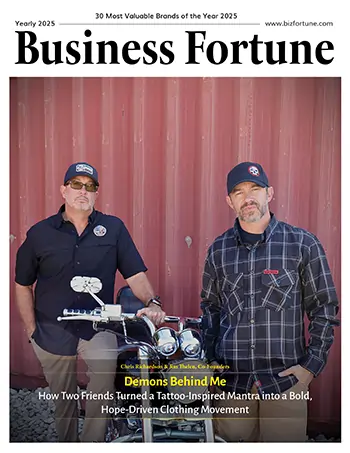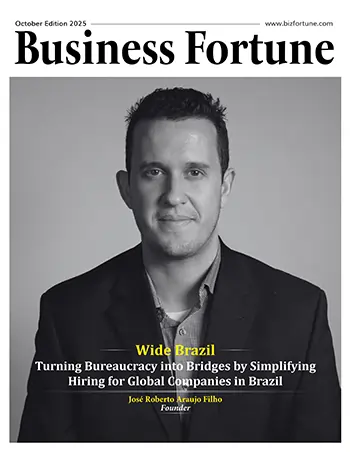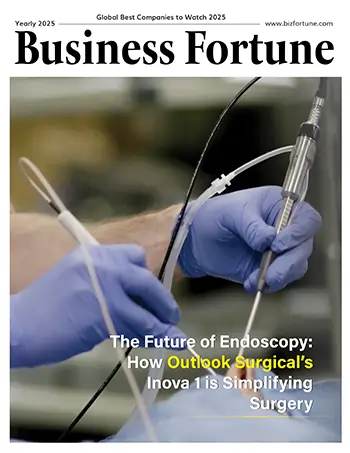Home Industry Space Women in Space: Trailblazers S...
Women in Space: Trailblazers Shaping the Future of Exploration
Space

Business Fortune
12 November, 2024
Women have led the way in space exploration from its inception. Women scientists in space and astronauts have persevered in the face of particular obstacles and challenges in a traditionally male-dominated field, exhibiting incredible fortitude and reaching important milestones that have influenced our understanding of the cosmos.
Pioneers like Dr. Mae C. Jemison, the first Black woman in space, and Valentina V. Tereshkova, the first woman in orbit on Vostok 6, have made a lasting impression on the history of space travel. In a similar vein, prominent individuals like Dr. Peggy A. Whitson have made ground-breaking discoveries, breaking records and motivating future generations.
You will learn about the breadth of these amazing women's inventiveness, tenacity, and dedication to advancing science and world exploration as you delve into their outstanding contributions.
Female space Trailblazers Shaping the Future of Exploration
NASA has promised that the female trailblazer’s astronaut will set foot on the moon very soon. In September 2025, Astronaut Christina Koch, a member of its crewed lunar mission Artemis 2, will make history as the first female astronaut to fly by the Moon. Women have made up just 11% of astronauts to date.
Women's achievements in space exploration serve as a monument to the strength of tenacity, willpower, and an unshakable goal. From Sally Ride's ground-breaking accomplishments to Valentina Tereshkova's historic mission, Mae Jemison's multifaceted genius, Peggy Whitson's record-breaking leadership, Christina H. Koch's perseverance, and Kalpana Chawla's resolve, these women have paved the way for future generations to be inspired.
Their experiences serve as a reminder that everyone who dares to dream and puts in the necessary effort to make those aspirations a reality can reach the stars. Let's continue to inspire and support the upcoming generation of explorers, Women scientists in space, and astronauts—regardless of gender—as they aim high and influence the direction of space exploration as we honor the accomplishments of these incredible women.
Introduction: The Vital Role of Women in Space Exploration
In recent years, women in space have advanced remarkably and made significant contributions to space exploration. In the 1960s, Valentina Tereshkova became the first female astronaut. Other female astronauts followed suit, including Sally Ride, who in 1983 became the first American woman to enter space. These early successes demonstrated the power and promise of women in a traditionally male-dominated sector.
The number of space missions by women has grown recently. The European Space Agency (ESA) has made an attempt to increase the number of female astronauts on its teams and has worked hard to advance gender equality. In space exploration, this has led to a variety of teams and perspectives, which has aided scientific inquiry and discovery.
Some obstacles need to be removed in order to increase women's participation in space exploration.
-
More women may choose to work in this industry if an inclusive workplace that promotes gender equality is established.
-
Aspiring female astronauts can overcome any challenges they encounter by receiving assistance and mentoring.
Pioneering Women Astronauts Who Made History
Women have established numerous records for spacewalks and extended flights on the International Space Station since Valentina Tereshkova became the first woman in space in 1963. NASA women pioneers plan to place the first woman on the moon in 2026 as part of the Artemis mission, which is named after Apollo's twin sister. This will be another significant milestone.
We honor women's accomplishments in space with this countdown, from the first female shuttle commander to the all-female space trailblazers.
-
Valentina Tereshkova, the first female astronaut, set the path for the several female spacefliers who would come after her. Out of almost 400 applications, Soviet astronaut Tereshkova was chosen to embark on the Vostok 6 mission on June 16, 1963. At the time, she was 26. During her mission, Tereshkova orbited the Earth 48 times and spent 70 hours in space. Despite being a symbol of Soviet space research, she never took to the skies again and instead worked as a teacher and test pilot.
-
NASA astronaut Sally Ride embarked aboard the space shuttle Challenger's STS-7 mission on June 18, 1983, making history as the first American woman in orbit. After Soviet cosmonaut Svetlana Savitskaya and Valentina Tereshkova, who both flew on the Soyuz T-7 mission on August 19, 1982, she became the third woman in space.
-
Peggy Whitson, a NASA astronaut, became the first female astronaut to lead the International Space Station during Expedition 16 in April 2008. In 1989, she became an official biochemist at NASA’s Johnson Space Center, and in 1992, she was the Shuttle-Mir program’s project scientist. During her journey, she was NASA's first official Science Officer on the station and spent 185 days in orbit.
-
Soviet cosmonaut Svetlana Savitskaya was the first female spacewalker, or extravehicular activity (EVA). In August 1982, 19 years after Valentina Tereshkova's mission, Savitskaya became the second woman to fly in space while working as a research cosmonaut aboard the space station Salyut 7. On August 19, 1982, she took off aboard a Soyuz T-7 spacecraft and returned to Earth eight days later. However, Savitskaya became the first woman to walk in space in 1984 on her second visit to Salyut 7. She was also the first woman to make a second space flight.
-
In May 1991, British food chemist and private citizen Helen Sharman traveled to the Mir space station on the Soyuz TM-12, making her the country's first space traveler. She also made history by being the first female visitor to the Mir space station during this flight. On May 18, 2991, Sharman launched to Mir and spent eight days in orbit conducting investigations on crystal development and biology while also conducting radio conversations with British students.
-
On October 11, 1984, NASA astronaut Kathryn D. Sullivan flew outside the space shuttle Challenger as part of mission STS-41-G, making history as the first American woman to complete a spacewalk. Sullivan's spacewalk took place during Challenger's nine-day mission to deploy an Earth observation satellite (the Earth Radiation Budget Satellite) and demonstrate satellite refueling technology, just months after the first-ever spacewalk by a woman (cosmonaut Svetlana Savitskaya's experience in July of that year).
-
In September 1992, Mae Jemison, a NASA women pioneer, became the first African-American woman to travel to space when she boarded the space shuttle Endeavour. During the STS-47 mission, Jemison spent little over 190 hours in orbit before departing NASA in March 1993.
-
Eileen Collins, a NASA astronaut, was the first female astronaut to command a space shuttle mission. To be eligible for this position, an astronaut had to have at least 1,000 hours of jet aircraft piloting experience. In July 1999, Collins led the STS-93 space shuttle mission, and in July 2005, he led it again.
-
NASA declared in April 2019 that Christina Koch, an astronaut on Expedition 59, would have her stay at the ISS extended to 328 days. Previously held by NASA astronaut Peggy Whitson, who spent 289 days in space in a row from 2016 to 2017, she surpassed the record for the longest single spaceflight by a woman.
-
In 1992, Roberta Bondar participated in the STS-42 space shuttle mission, becoming Canada's first female astronaut.
-
Chiaki Mukai, who worked for the National Space Development Agency of Japan (NASDA), was the first Japanese woman in space. In July 1994, Mukai traveled on the space shuttle Columbia as part of mission STS-65. She broke the record for the longest trip ever completed by a female astronaut at the time.
-
During the 2007 Expedition 15 mission, NASA astronaut Sunita Williams became the first person to run a marathon in space. She used the Combined Operational Load Bearing External Resistance Treadmill (COLBERT) at the Tranquility Node of the International Space Station to run 26 miles in 4 hours and 26 minutes after formally registering for the Boston Marathon. She currently in the ISS mission.
Challenges Facing Women in Space Exploration
In the space business, women in space encounter prejudice and preconceptions, as well as issues such as underrepresentation in leadership roles, work-life balance, salary inequality, harassment, educational barriers, limited mentorship, biased hiring, funding access, and cultural barriers. Diversity programs, mentorships, flexible work arrangements, salary transparency, anti-harassment policies, inclusive hiring practices, and campaigns to boost interest of women in STEM are some ways to counter this.
The Future of Gender Diversity in Space Exploration
There have been difficulties along the way for female astronauts trying to get into the male-dominated space sector. But the tenacity and fortitude of women in space exploration have broken down boundaries and opened the door for upcoming astronaut generations.
Beyond the symbolic act of shattering glass ceilings, gender diversity in space missions has many advantages. It increases the overall effectiveness and success of missions by bringing forth a variety of viewpoints, abilities, and approaches to problem-solving. The all-female EVAs demonstrate that, in the challenging and complex environment of space, diversity is not only morally required but also practically necessary.
Conclusion:
In conclusion, women in space have greatly impacted travel throughout its history by overcoming barriers and making groundbreaking achievements. From Valentina Tereshkova's historic flight to the upcoming Artemis missions, women have shown that strength and perseverance know no bounds. As we continue to celebrate their achievements, it is clear that having a diverse range of women in space not only inspires but also strengthens missions, fostering innovation and progress. As more women pursue careers as engineers, Women scientists in space, and astronauts, the future of space exploration is more inclusive and bright than ever.
FAQ:
-
Who was the first woman to go into space?
In 1963, Valentina Tereshkova became the first woman to travel into space.
-
Why is gender diversity important in space exploration?
Gender diversity boosts innovation and mission success by bringing diverse perspectives and problem-solving skills to the table.
-
What challenges do women face in becoming astronauts?
Women in space deal with prejudice, stereotypes, underrepresentation, lack of mentorship, and difficulties juggling work and personal obligations.
-
How are space agencies promoting women in space roles?
By providing mentorship programs and promoting gender equality, space agencies are urging more women in STEM to pursue career.
-
Are there upcoming space missions by women?
Yes, the first woman will soon be sent to the Moon by NASA's Artemis mission.


































